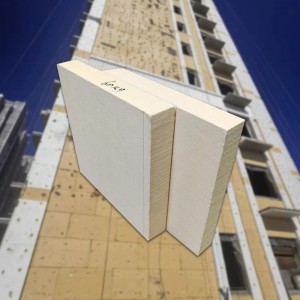The Value and Necessity of Building Insulation
Due to the reduction of energy consumption, it can reduce the emissions of carbon dioxide and other waste, as well as the waste of non renewable resources, thereby reducing the “greenhouse effect” and contributing to the “sustainable development” of protecting the Earth and saving more resources. If external insulation walls are used to comprehensively improve the insulation performance of the walls, it is beneficial to maintain a high temperature on the indoor and internal surfaces of the walls, thereby improving the indoor thermal environment.
In recent years, news about external insulation has been seen as negative textbooks, and people tend to turn pale when it comes to insulation. The reason is that external insulation projects are too extensive, resulting in more quality accidents. People are more likely to pay attention to those issues, but their own value gradually fades away. While promoting standardized external insulation techniques through popular science, it is also necessary to review the value of external insulation that has been forgotten and overlooked by people.
The world economy has made great progress, but with it, there has also been a tense situation in energy. Energy shortage and waste have become one of the main bottlenecks in social and economic development, which has endangered the sustainable development of society.
One of the important measures to solve energy shortage is to save energy. The energy required for economic development needs to be more dependent on energy conservation to solve, and building energy conservation is undoubtedly an important link in energy-saving system engineering. In terms of architecture, the energy consumption during use mainly includes heating, ventilation, air conditioning, household appliances, etc., with heating and air conditioning being the main energy consumption. However, the insulation and airtightness performance of buildings are poor, the thermal efficiency of heating systems is low, and the heating energy consumption per unit of residential building area is high. Therefore, building energy conservation has become a topic of great concern, and the focus of energy conservation is on the energy consumption of heating and cooling in the enclosure structure. In this way, the insulation and energy-saving system of the building envelope structure is increasingly strengthened.
Due to the reduction of energy consumption, it can reduce the emissions of carbon dioxide and other waste, as well as the waste of non renewable resources, thereby reducing the “greenhouse effect” and contributing to the “sustainable development” of protecting the Earth, leaving more resources for future generations. The main functions of external wall insulation are reflected in the following aspects:
Protecting the exterior wall surface
As the outer layer of a building, the exterior wall must withstand all external climatic influences, such as heat, cold, freezing, snow, hail, rain, and wind. Rain, temperature changes, and environmental pollution alternately and continuously act on the outer wall, causing cracks and mold to form. Buildings are damaged, residents’ bodies are affected, and heating and cooling costs have significantly increased. Compared to expensive building maintenance costs, the value of external wall insulation systems far exceeds their own costs. It wraps and protects the exterior of the building, meeting its insulation performance while greatly extending its lifespan. The external wall insulation system is the best external wall protection system for new buildings and the best maintenance system for old buildings.
Protecting the main structure and extending the lifespan of the building
Adopting an external wall insulation scheme, the insulation layer is placed on the outside of the building structure, buffering the stress caused by structural deformation due to changes in humidity, avoiding structural damage caused by rain, snow, freezing, thawing, dry and wet cycles, and reducing the erosion of harmful gases and ultraviolet rays in the air on the enclosure structure. It has been proven that as long as the selection of insulation materials for walls and roofs is appropriate and the thickness is reasonable, external insulation can effectively prevent and reduce temperature deformation of walls and roofs, and effectively eliminate common diagonal cracks or splay cracks in the top horizontal wall. Therefore, external insulation can not only reduce the humidity stress of the enclosure structure, but also protect the main structure, thereby effectively improving the durability of the main structure.
Warm in winter and cool in summer, comfortable to live in
After external insulation, due to the increase in thermal capacity of the solid walls inside the exterior walls, the indoor space can store higher heat. When the indoor air temperature is affected by unstable heat, it rises or falls, and the wall structure layer can absorb or release heat, which is conducive to maintaining stable room temperature. In summer, the external insulation layer can reduce the combined effects of solar radiation and high outdoor temperatures, resulting in a decrease in the surface temperature of the exterior wall and the temperature of the indoor air. It can be seen that external insulation of the exterior wall will make the building warm in winter and cool in summer, making living comfortable.
Phenolic foam insulation board adopts closed cell foam structure, which can effectively isolate cold and hot air, save energy, and is nonflammable, non melting and non shrinking in case of fire. It is light in weight, easy to construct, stable in structure, non aging and non shrinking. It is a high-quality material for wall insulation.
Post time: Sep-11-2023

